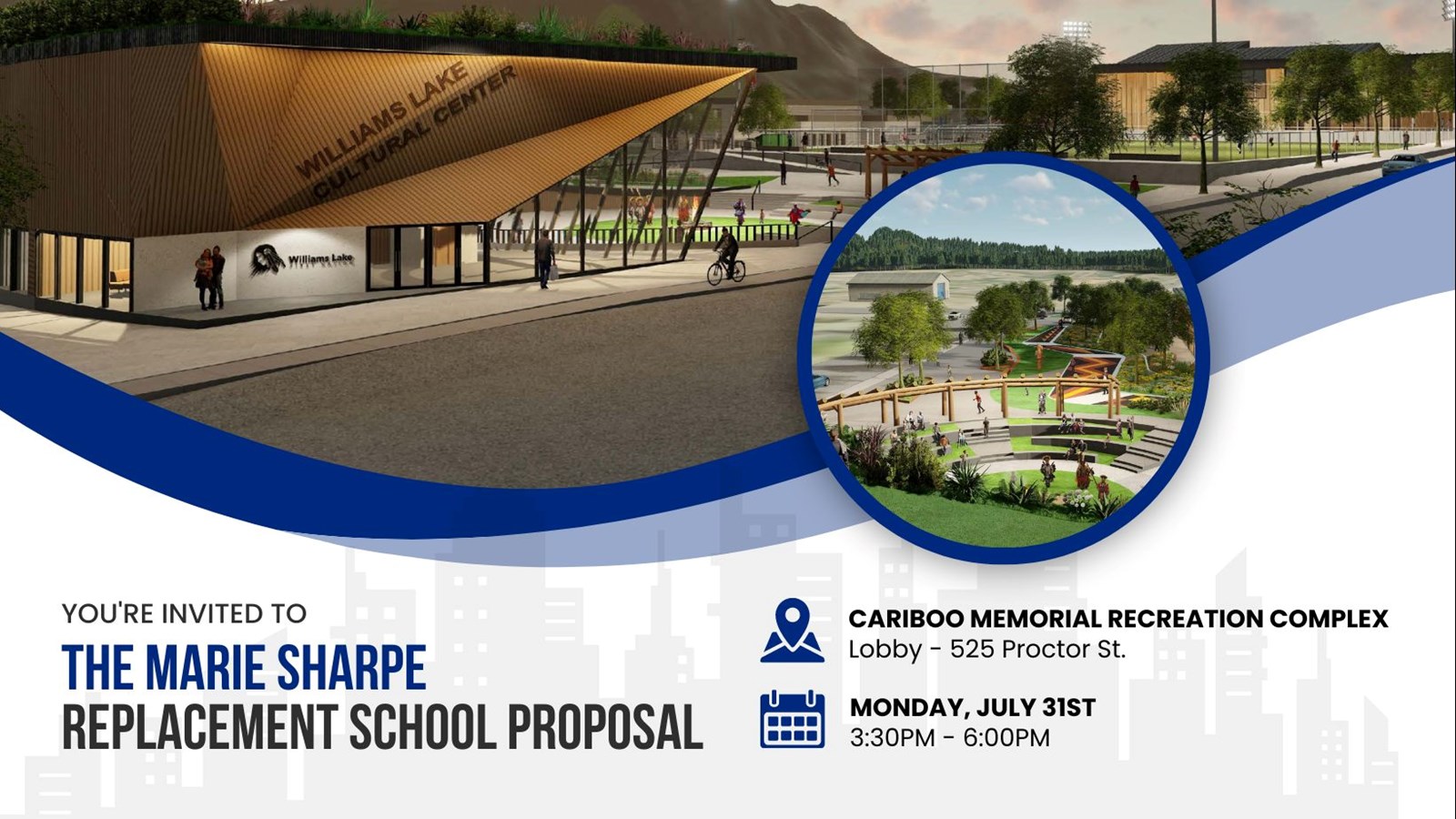Our District
.png)
Welcome to the Cariboo-Chilcotin
Our district encompasses forests, lakes, plains, mountains, and big sky across a geographic area the size of New Brunswick on the traditional and unceded territories of the Secwepemc, Tsilhqot’in, and Dakelh First Nations. Rich Indigenous culture, thriving small towns and rural communities, with boundless opportunities for fishing, hiking, and hunting provide a broad range of cultural and outdoor experiences. There is something here for everyone, which is why so many people come for a visit and end up living here for a lifetime. Learn more about the Cariboo-Chilcotin Lifestyle.
The School District provides education to approximately 4600 students across 22 schools in a diverse geographical area about the same size as the Province of New Brunswick. The distance between our most eastern and western schools is over 500 km. Our teachers work in communities that range from a few families to one serving over 30,000 people. Our three smallest schools have less than 20 students while our largest has just under 1500.
Although many of our schools are in rural communities, most working and living conditions are similar to those in schools found in other parts of the province. A number of our schools are relatively new and a similar number have had recent renovation projects which have brought the quality of the facilities up to a high standard. Schools are well-designed and equipped with the materials and books necessary to implement contemporary instructional programs. Check out our Programs & Services.
Administrative Structure
The Board of Education of the Cariboo-Chilcotin School District (a.k.a. School District No. 27) is composed of seven trustees, representing all regions of our large district. As a Board, they are responsible to the communities and to the provincial government for providing educational services throughout the district. The schools’ principals and vice-principals are responsible for planning and implementing school programs suitable to the needs of their communities--visit Our Schools section for more information.
Accessibility
As per requirements in the Accessible BC Act, our school district has made available a way for the public to provide feedback on our Accessi...
Learn MoreAdministrative Procedures
Section 200 - Communications and Engagement AP 210 - Communications AP 240 - Volunteers in Schools Section 300 - Students, Instruction an...
Learn MoreBoard of Education

ABOUT THE BOARD OF EDUCATION The British Columbia Statement of Education Policy Order sets out the duties, rights and responsibilities for ...
Learn MoreDistrict Contacts

Main Line #: (250) 398-3800 Superintendent's Office Cheryl LenardonSuperintendent of SchoolsBrenda HookerSecretary-Treasurer Jodi Symmes...
Learn MoreMarie Sharpe Replacement School

Join us for the Marie Sharpe Replacement School Proposal! This is your opportunity to view the site development options for a proposed new ...
Learn MoreMission & Values

Mission Ensuring all students have meaningful learning experiences, empowering them to succeed in an ever changing world Vision We envisi...
Learn MorePolicies and Bylaws
All organizations, as a requirement of incorporation, are required to establish Bylaws in respect to specific matters. These are usually mat...
Learn MoreDistrict Plan For Learner Success
We are committed to continuous improvement for ALL learners in Cariboo-Chilcotin School District to flourish. We intentionally act to raise ...
Learn More
